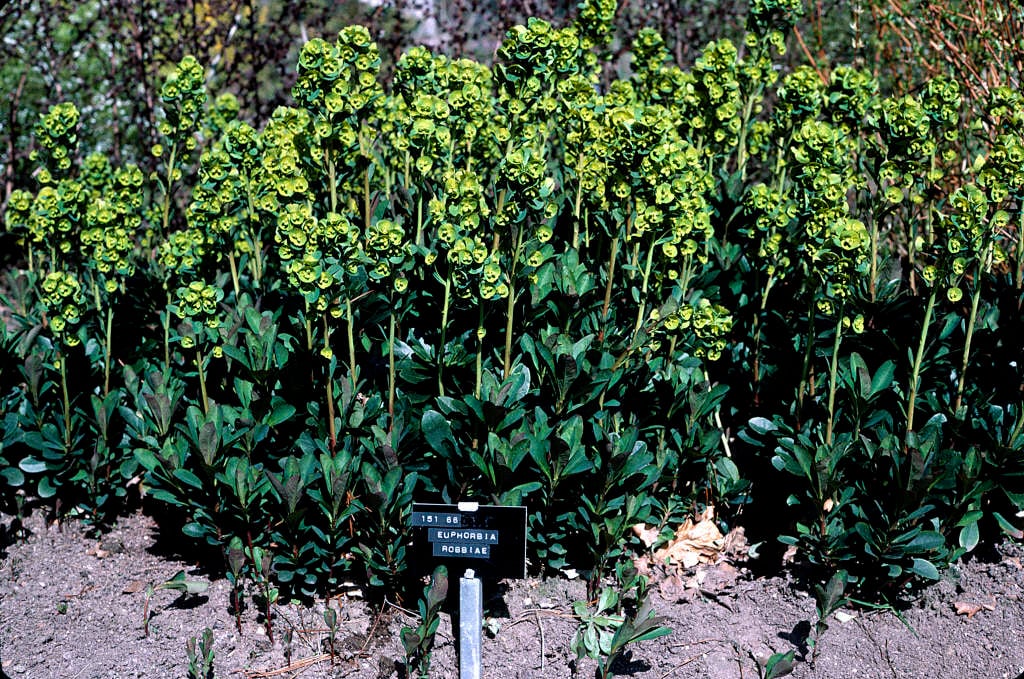Euphorbia amygdaloides var. robbiae

Mrs Robb's bonnet
A spreading evergreen perennial to 50cm in height, forming colonies of rosettes of oblong, dark green leaves from which arise large rounded sprays of yellow-green flowers

Buy this plant
Size
Ultimate height
0.1–0.5 metresTime to ultimate height
2–5 yearsUltimate spread
1–1.5 metresGrowing conditions
Moisture
Moist but well–drained, Well–drainedpH
Acid, Alkaline, NeutralColour & scent
| Stem | Flower | Foliage | Fruit | |
| Spring | Green Yellow | Green | ||
|---|---|---|---|---|
| Summer | Green Yellow | Green | ||
| Autumn | Green | |||
| Winter | Green |
Position
- Full shade
- Full sun
- Partial shade
Aspect
East–facing or South–facing or West–facing
Exposure
Exposed or Sheltered Hardiness
H6Botanical details
- Family
- Euphorbiaceae
- Native to GB / Ireland
- No
- Foliage
- Evergreen
- Habit
- Suckering
- Potentially harmful
- Humans/Pets: IRRITANT to skin/eye, harmful if eaten. Wear gloves and other protective equipment when handling. For further information and contact numbers regarding pets, see the HTA guide to potentially harmful plants
- Genus
Euphorbia can be annuals, perennials, shrubs or succulents, with milky sap and small flowers held within cupped, often colourful bracts
- Name status
Correct
- Plant range
- Turkey
How to grow
Cultivation
An easy-to-grow plant that will cope with most conditions even dry shade. It spreads by rhizomes and has the potential to become a nuisance if not managed well. See Euphorbia for further advice
Propagation
Propagate by division in spring
Suggested planting locations and garden types
- Coastal
- Cottage and informal garden
- Wildlife gardens
- Low Maintenance
- Ground cover
Pruning
Cut back flowering shoots to ground level in late summer or autumn
Pests
May be susceptible to aphids
Diseases
May be susceptible to grey moulds
Get involved
The Royal Horticultural Society is the UK’s leading gardening charity. We aim to enrich everyone’s life through plants, and make the UK a greener and more beautiful place.